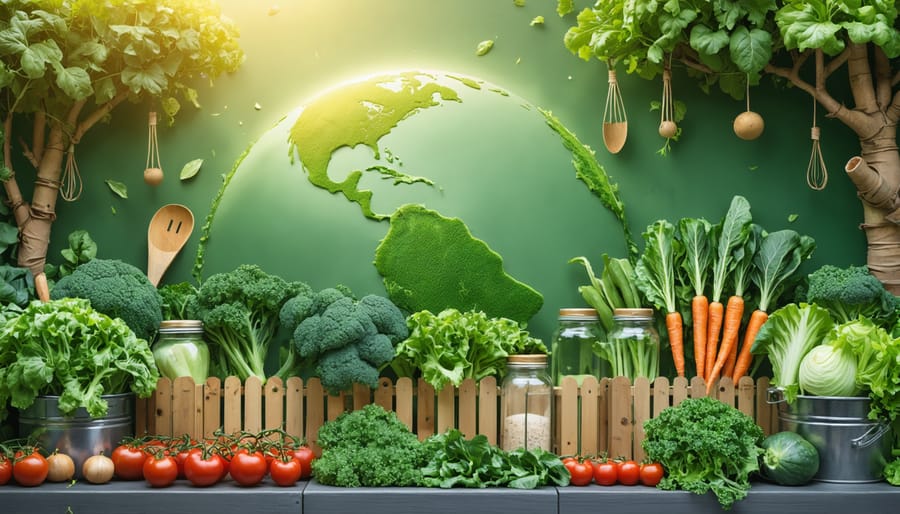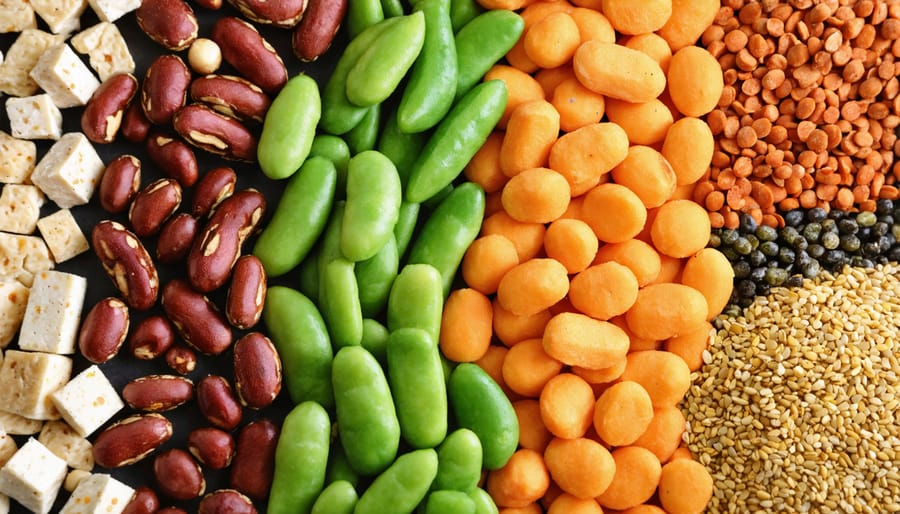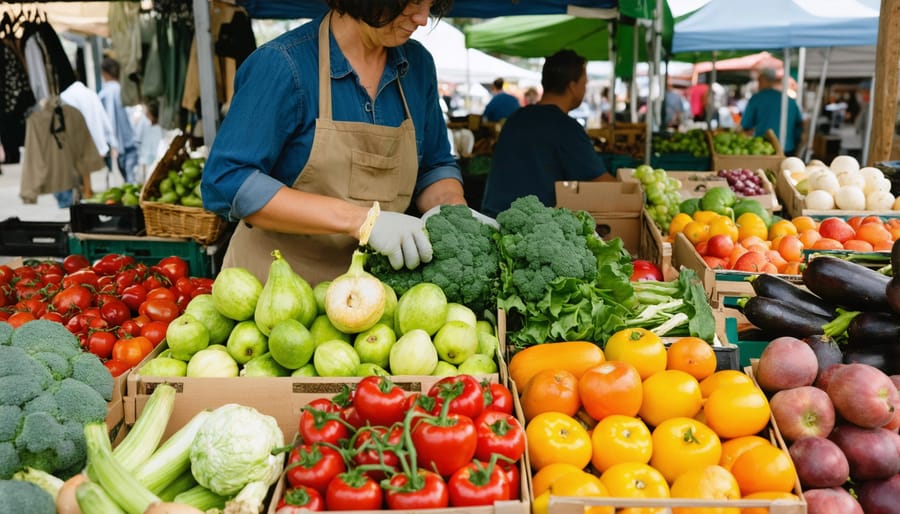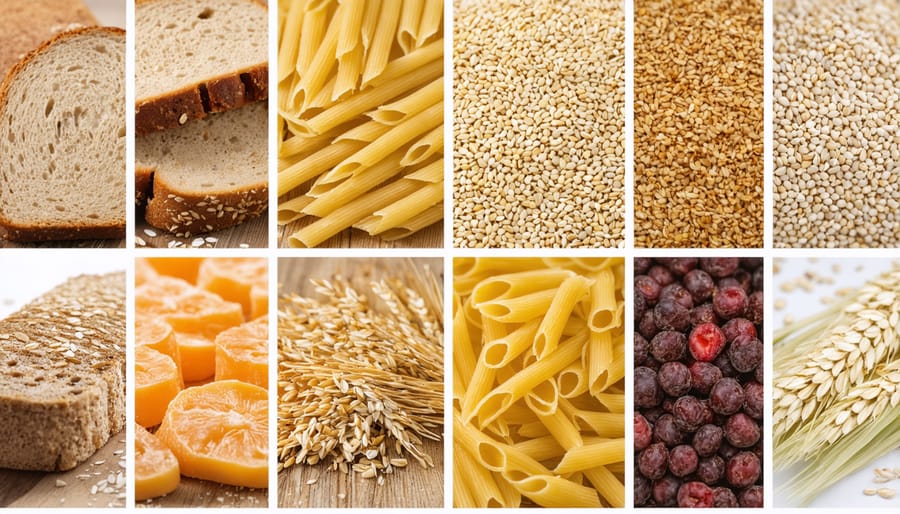
Prioritize plant-based meals by filling half your plate with vibrant fruits and vegetables at each meal. Reduce food waste by planning weekly menus, using up perishables first, and composting scraps – simple eco-friendly habits that make a big impact. Shop locally and seasonally to minimize your carbon footprint and support your community’s farmers. Make sustainable kitchen swaps like using reusable produce bags, glass storage containers, and biodegradable cleaning products. These small shifts add up to a healthier you and a healthier planet.
Prioritize Plant-Based Proteins

Meatless Monday Recipes
Looking for some delicious and easy plant-based recipes to try on Meatless Mondays? We’ve got you covered! First up, a hearty and satisfying Black Bean Quinoa Bowl. Simply cook quinoa, sauté onions and peppers, then mix with black beans, corn, and your favorite Mexican-inspired seasonings. Top with fresh cilantro and a squeeze of lime for a burst of flavor.
Next, try a creamy Roasted Red Pepper and Tomato Soup. Roast red peppers, tomatoes, garlic, and onion until tender and slightly charred. Blend with vegetable broth, basil, and a touch of cream (dairy or plant-based), then serve with crusty bread for dunking.
Lastly, whip up a quick and tasty Veggie Stir-Fry. Sauté your choice of vegetables (we love broccoli, carrots, and snap peas) with garlic and ginger. Toss with cooked rice noodles and a savory sauce made from soy sauce, hoisin, and a bit of sriracha for heat. These plant-based dishes are so flavorful and filling, you won’t even miss the meat! Give them a try and let us know your favorites.

Choose Seasonal and Local Produce
Eating seasonally and locally is not only a delicious way to enjoy fresh produce at its peak, but it also supports a more sustainable and healthy diet. When you choose fruits and vegetables that are in season and grown nearby, you’re reducing the environmental impact of long-distance shipping while also enjoying produce that’s packed with flavor and nutrients.
One of the best ways to explore seasonal and local produce is by visiting your local farmer’s market. These markets offer a wide variety of fresh, locally grown fruits and vegetables, allowing you to connect directly with the farmers who grew them. Shopping at farmer’s markets is a fantastic opportunity to ask questions about their growing practices, discover new varieties of produce, and get inspired by the vibrant colors and flavors of each season.
To help you navigate the world of seasonal produce, consider using a seasonal produce guide. These guides highlight which fruits and vegetables are at their best during each season, making it easier to plan your meals around what’s fresh and available. For example, in the spring, you might enjoy tender asparagus, sweet peas, and juicy strawberries, while the fall brings hearty squash, crisp apples, and flavorful root vegetables. Exploring new recipes, like those found in The Almost Vegan Cookbook, can also provide inspiration for using these fresh ingredients.
When shopping for seasonal and local produce, don’t be afraid to try new things! Step outside your comfort zone and experiment with unfamiliar fruits and vegetables. You might just discover a new favorite that’s not only delicious but also supports your commitment to a sustainable and healthy diet.
Reduce Food Waste
5 Recipes to Use Up Produce Odds and Ends
Here are five delicious recipes to help you use up those leftover fruits and veggies, reducing food waste while nourishing your body:
1. Everything-but-the-Kitchen-Sink Soup: In a large pot, sauté onions and garlic, then add any veggies you have on hand (like carrots, celery, zucchini, or leafy greens). Pour in broth, season with your favorite herbs and spices, and let it simmer until the flavors meld.
2. Versatile Veggie Stir-Fry: Heat oil in a wok or large skillet, then add chopped veggies (like bell peppers, broccoli, mushrooms, or snap peas) and stir-fry until crisp-tender. Toss in any leftover proteins (tofu, chicken, or shrimp) and season with soy sauce, ginger, and garlic for an easy, customizable meal.
3. Waste-Not Smoothie: Blend overripe bananas, berries, or stone fruits with yogurt or milk, then toss in any leftover greens (like spinach or kale) for a nutrient-packed breakfast or snack. Experiment with add-ins like nut butter, seeds, or oats for extra flavor and texture.
4. Scrappy Veggie Frittata: Whisk eggs with a splash of milk, then fold in chopped veggies (like asparagus, tomatoes, or potatoes) and shredded cheese. Pour into a greased baking dish and bake until golden and fluffy – perfect for breakfast, lunch, or dinner!
5. Clean-Out-the-Fridge Fried Rice: In a large skillet, sauté any leftover veggies (like peas, carrots, or corn) with garlic and ginger. Add cooked rice, scrambled eggs, and a drizzle of soy sauce and sesame oil for a quick, satisfying meal that uses up all those odds and ends.
Opt for Whole Grains
Swapping refined grains for whole grains is a simple yet powerful way to boost the nutritional value of your meals. Whole grains like brown rice, quinoa, and whole wheat bread retain their fiber-rich outer layer, providing essential nutrients and promoting feelings of fullness. Not only do they support digestion and heart health, but their production often requires fewer resources than refined alternatives.
To easily incorporate more whole grains into your diet, start by making small changes. Choose whole wheat pasta over white, opt for brown rice in your stir-fries, or explore ancient grains like millet or sorghum. When baking, experiment with replacing a portion of all-purpose flour with whole wheat or spelt flour. You can also seek out whole grain varieties of your favorite snacks, like popcorn or crackers. For additional delicious and easy recipes that incorporate these wholesome ingredients, you might enjoy browsing Ellen’s Homestyle Kitchen.
Remember, transitioning to whole grains may take time for your taste buds to adjust. Begin by mixing whole grains with refined ones, gradually increasing the proportion until you’ve made the full switch. With a bit of creativity and persistence, you’ll soon discover a world of delicious, nutritious whole grain options that support both your health and the planet.

Hydrate Sustainably
Staying hydrated is essential for a healthy lifestyle, but it’s important to do so sustainably. Instead of reaching for single-use plastic water bottles, opt for tap or filtered water in a reusable container. Not only will you reduce waste, but you’ll also save money in the long run. If you’re looking to mix things up, try herbal teas, which offer a variety of flavors and health benefits. Brewing your own tea and storing it in a reusable bottle is an eco-friendly way to stay hydrated on the go. For a refreshing twist, infuse your water with slices of lemon, cucumber, or mint. These simple swaps can help you stay hydrated while minimizing your environmental impact. Remember, small changes in your daily habits can make a big difference in the long run, both for your health and the planet.
Conclusion
Adopting a sustainable, healthy diet doesn’t have to be overwhelming. By starting with one or two simple swaps, like choosing plant-based proteins more often or shopping at your local farmers market, you can make a significant impact on both your health and the environment. Remember, every small change adds up over time. As you continue to integrate more sustainable habits into your lifestyle, you’ll not only feel better physically but also empowered knowing that you’re contributing to a healthier planet. So, take that first step today and enjoy the journey towards a more sustainable, nourishing way of eating.



